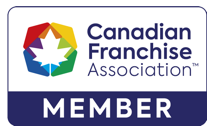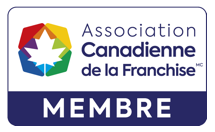Many families are concerned about how to structure their estate plans to best provide for their loved ones with special needs.
There are many factors at play, including the nature and extent of the assets that will be left to the beneficiary, the degree to which one wants to protect the ODSP benefits enjoyed by the beneficiary, the degree of independence of the beneficiary, and who will be entrusted with carrying out your instructions. Bearing these factors in mind, individuals have several options when it comes to the vehicles available to provide for beneficiaries with disabilities.
Henson Trust
This is the most well-known tool used in the disability planning context. It refers to an absolute discretionary trust in which the trustees are given complete discretion to pay to the disabled beneficiary or for his or her benefit, any amount at any time that they determine appropriate. Since there are no dates, ages or events upon which the beneficiary becomes entitled to any portion of or the whole of the Trust, the Trust assets (except for those actually paid out) do not vest in the beneficiary (meaning that the beneficiary doesn’t, in fact, have a right to them). This is advantageous for beneficiaries applying for or receiving Income Support from the Ontario Disability Support Program (ODSP), which is not available to those whose income or assets exceed certain thresholds (currently $10,000 in a 12-month period of income and $40,000 of assets – excluding the value of a principal residence – for a single person).
For a Henson Trust to be valid, it must name one or more beneficiaries to receive any income that is not paid out to the original beneficiary after twenty-one years (at which point income can no longer be accumulated in the Trust) and to receive any assets left in the Trust on the original beneficiary’s death.
Registered Disability Savings Plan (RDSP)
An RDSP is a registered account designed to help individuals who are eligible for the Disability Tax Credit (DTC) accrue long-term savings. Family members can make after-tax contributions to the RDSP until the beneficiary turns 59, up to a lifetime limit of $200,000. These amounts can later be withdrawn by the beneficiary tax-free. A particular benefit of RDSPs is that the government deposits matching grants based on the beneficiary’s family income and the amounts contributed. An RDSP can get a maximum of $70,000 in matching grants over the beneficiary’s lifetime. When the grant funds are withdrawn, they are taxable in the hands of the beneficiary.
Provided there is room in a beneficiary’s RDSP, proceeds from a deceased parent or grandparent’s RRSP or RRIF can be transferred to such RDSP on a rollover basis provided that such parent or grandparent was providing the disabled beneficiary financial support. Matching grants are not available on these contributions.
Lifetime Benefit Trust (LBT)
An LBT can be drafted in one’s Will to benefit a financially dependent spouse, child or grandchild with a disability.
Like an RDSP, an LBT is also eligible to receive RRSP or RRIF proceeds on a rollover basis. To do so, the trustees of the LBT must purchase a Qualifying Trust Annuity (QTA) using such proceeds and designate the LBT as the annuitant. Accordingly, to the extent that one’s RDSP is maxed out, an LBT may be established to receive remaining proceeds from an RRSP or RRIF tax-free.
Like a Henson Trust, the trustees of an LBT have full discretion over the payments to be made to the beneficiary, provided that said discretion is exercised in such a way that supports the beneficiary’s needs, comfort, care, and maintenance. Unlike a Henson Trust, however, which must have alternate beneficiaries named to receive excess income accruing after twenty-one years, for an LBT to be valid, no one other than the disabled beneficiary may receive any income or capital from the Trust during the disabled beneficiary’s lifetime. However, the Trust should still name alternate beneficiaries to receive any assets left in the LBT on the disabled beneficiary’s death.
Qualified Disability Trust (QDT)
A QDT refers to a trust established in one’s Will for a disabled beneficiary which qualifies for graduated income tax rates. This differs from most other trusts, the income from which is taxed at the top marginal rate. While Henson Trusts and LBTs may both qualify as QDTs, each beneficiary may only designate one Trust to receive such preferential tax treatment. Accordingly, if one’s estate establishes both a Henson Trust and an LBT for the same beneficiary, the estate trustees must carefully consider and assess (together with competent accounting professionals and the beneficiary or his or her personal representatives) which Trust should be designated as the beneficiary’s QDT.
At Mills & Mills LLP, our estate lawyers can assist you in building an estate plan to best suit your circumstances and to protect the interests of beneficiaries with special needs. To learn more about how we may be able to assist you please reach out to us online or by telephone at (416) 863-0125.

 2 St Clair Ave West
2 St Clair Ave West


